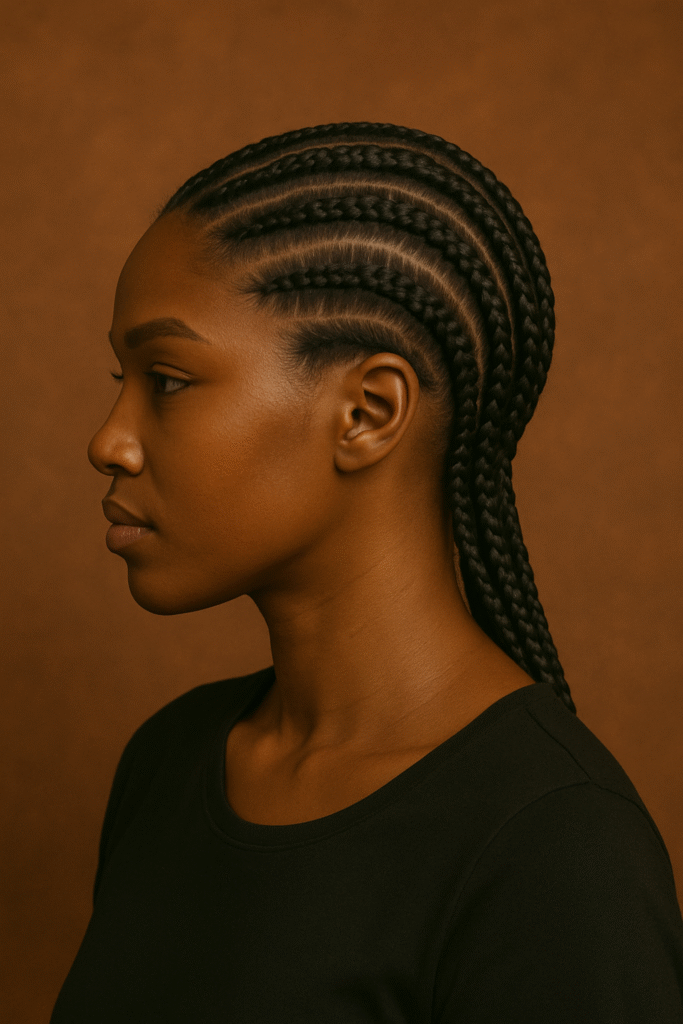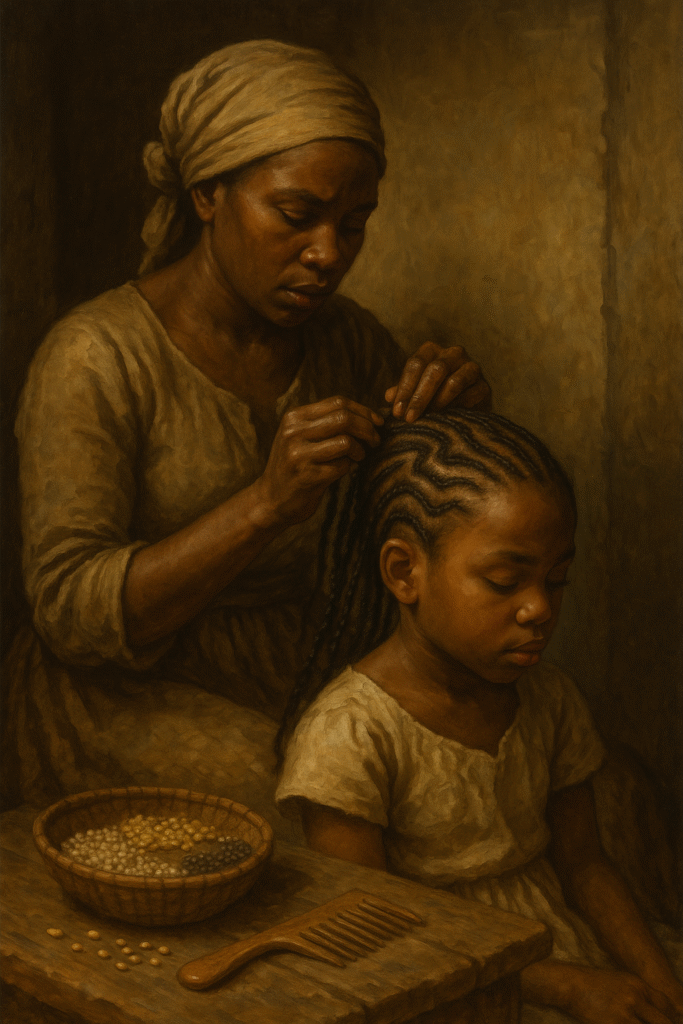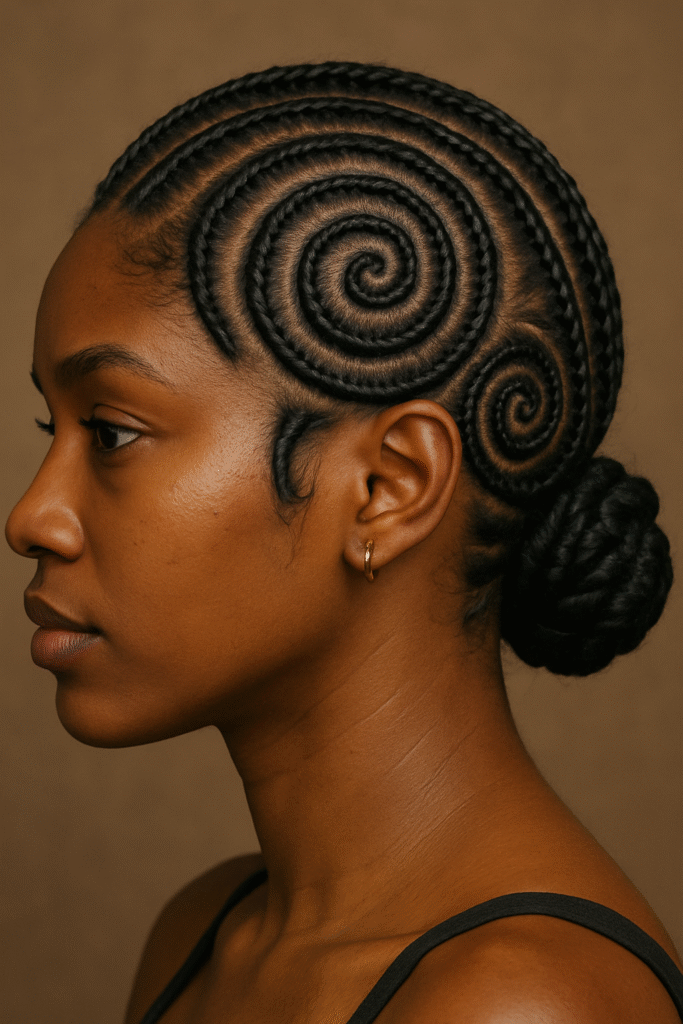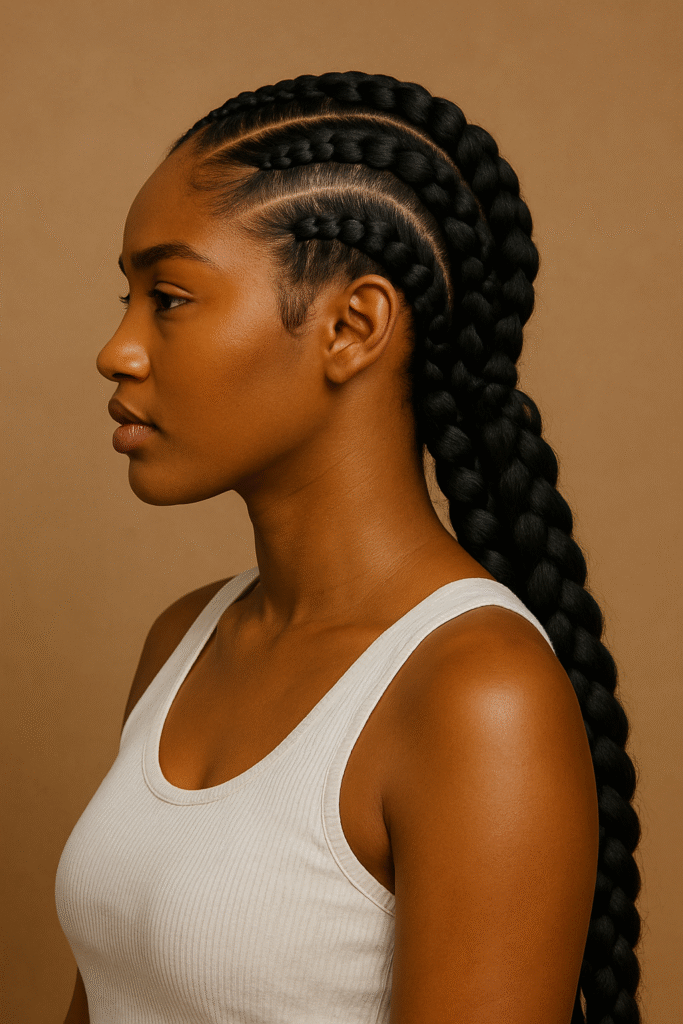Decoding Messages in Cornrows
For centuries, hair has been more than a style—it has been a statement, a symbol, and in some cases, a secret message. Among the many traditional African hairstyles, cornrows stand out not just for their intricate patterns but also for their hidden meanings. These rows told stories, mapped escape routes, and preserved cultural identity. This practice is now referred to as the braiding code—a powerful form of nonverbal communication passed down through generations.
What Is the Braiding Code?
The braiding code refers to the symbolic language encoded within cornrow patterns. These weren’t random or simply aesthetic choices. Instead, braiders would use the scalp as a canvas to create maps, signal statuses, convey messages, and even guide enslaved Africans to freedom.
Long before modern GPS or written communication, the head became a secret ledger of resistance and survival. The partings, rows, and knots all held meaning. In West African societies, these designs were linked to tribe, social class, religion, and age group. But during slavery in the Americas, the braiding code evolved into a radical act of rebellion and hope.
Cornrows as Resistance and Escape
Enslaved Africans used braiding codes to plot their way out of captivity. Some patterns represented entire roads or the number of paths to take before reaching a safe house or maroon settlement. One well-known story involves enslaved women in Colombia braiding escape maps directly onto the heads of others, sometimes including rice or seeds hidden under the braids to sustain the journey.
The raised ridges of cornrows served as topographical indicators, while knots could signify meeting points. This system of communication was so subtle that plantation overseers often overlooked it. In a world where language, culture, and autonomy were systematically stripped away, the braiding code allowed enslaved people to reclaim power—one braid at a time.
Symbols and Meanings in Traditional Cornrow Designs
While the exact meanings varied across regions and time periods, some recurring motifs in the braiding code include:
- Straight-back cornrows: These often denoted a direct path or journey.

- Zig-zag patterns: Could symbolize a dangerous route or coded message requiring discretion.

- Circular or spiral shapes: Linked to ideas of protection, cycles, or spiritual paths.

- Parting lines and spacing: Often indicated distances or symbolic divisions between freedom and danger.

In African traditions, these styles also carried meanings related to fertility, mourning, warrior status, or community role. The braiding code wasn’t static; it was adaptive, contextual, and alive.
Revival and Modern-Day Significance
Today, cornrows continue to be a powerful symbol of cultural pride, identity, and resistance. The resurgence of interest in traditional African hairstyles has sparked renewed attention to the braiding code. Artists, historians, and activists are working to document and revive this heritage, not just as a style but as a language.
On social media platforms like TikTok and Instagram, young people are using their platforms to explore ancestral braiding patterns, share personal stories, and decode forgotten designs. Fashion runways and music videos might feature the look, but for many in the African diaspora, cornrows are about far more than fashion—they are an encrypted history.
The Braiding Code in Contemporary Culture
Modern interpretations of the braiding code appear in visual art, educational exhibits, and oral storytelling. Documentaries and museums across the Americas are beginning to showcase the role of cornrows in resistance movements. In classrooms and community centers, workshops teach both the craft and the cultural heritage behind these styles.
Some braiders are even reimagining this code with new messages—embedding affirmations, birthdays, or tributes to ancestors into their styles. In this way, the braiding code is evolving while staying true to its roots as a powerful tool of expression.
Final Thoughts: Braids That Speak
Understanding the braiding code means listening to what cornrows have always been trying to say. These styles are not just about neatness, beauty, or trendiness. They are about memory, movement, and message. Whether mapping a path to freedom or signaling pride in one’s roots, each braid is a line in a story only the community knows how to read.
To wear cornrows today is to wear history. To braid them is to keep alive a language that once helped people survive. And to decode them is to honor the ingenuity, resilience, and legacy of those who found ways to speak when words were forbidden.
make sure to read this interesting history of African Hairstyles .